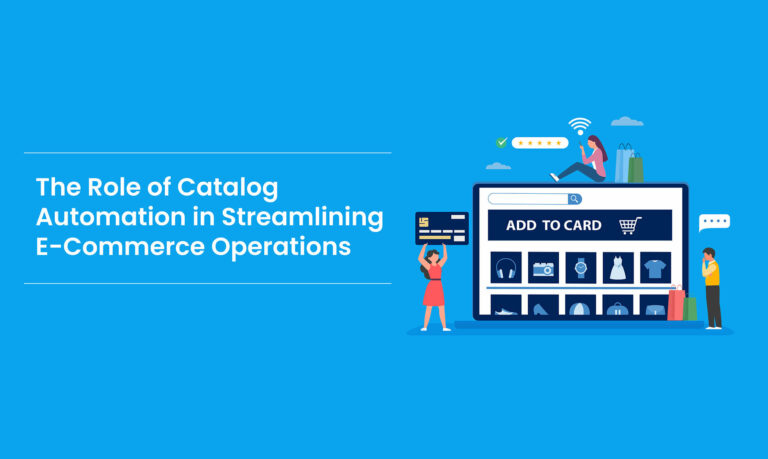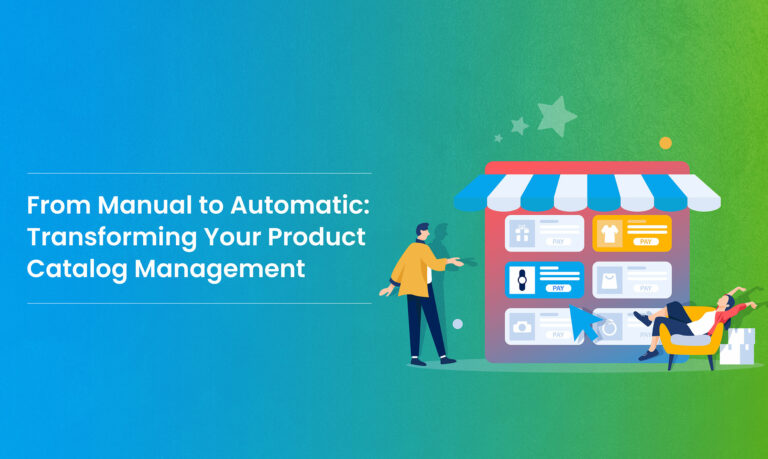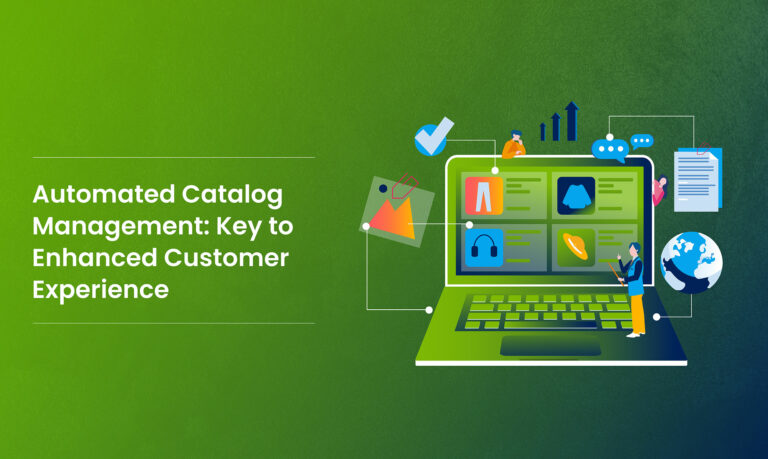Introduction
Since the recent increase in the number of goods, channels, and competitors within any e-commerce business, catalog automation is now imperatively the need of the hour. The whole data flow process must be managed, and its supply chain should be consistent and coherent with all customer points, i.e., physical and non-physical. This will improve customer help and sales excellence.
Catalog automation is the key factor in achieving success in the best ways possible and in the manner that takes the least time and resources. Automating catalogs is crucial for a successful e-sales or distribution company whose product diversity and competition are bigger than ever before. However, e-commerce remains an anchor, especially in the B2B segment, with some millions of small startups hoping to pool their resources and technology to dominate global retailing.
What Is Catalogue Automation?
Catalog automation relates to software utilization for the sake of automation of the production and management of product catalogs, price lists, brochures, and directories. This technology makes it possible for business owners to speed up and optimize the process of creating catalogs. In that way, a catalog is created faster, costs less, and is error-free while resulting in better customer engagement and revenue-boosting.
In this manner, catalog automation solutions enable the combination and processing of data from such databases as ERP systems, PIM platforms, e-commerce websites, and spreadsheets, which are then automatically formatted in the desired layout.
Firstly, this streamlines the publishing process, and secondly, the data collected and shared is of high quality. The product information is up-to-date and consistent across all the channels, which, in return, is a very important contributing factor to customer satisfaction and sales conversions. An automatic catalog is programmed to automate any number of functionalities that a person may have performed in the past.
Catalog Automation: Fueling better decision-making in businesses
Businesses can streamline their operations using catalog automation in several ways:
Real-time Updates
Website, mobile app, and printed material data can be updated in a snap with catalog automation, for example. It could guarantee that managers could use reliable and latest data when making decisions for the business.
Consistency
Integration of automated catalog systems through multiple channels keeps the information regarding products uniform. This is necessary to ensure that the decision-maker is working with consistent data, which may decrease accidental errors and inconsistencies.
Data Insights
In catalog automation platforms, analysis tools are built, and they offer crucial data to the decision-maker on how the customers are behaving and making their purchases, how the products are performed, and what the market is up to. From these data, experienced professionals acquire a more thorough knowledge and a more pragmatist sense for trading, and therefore, they can conduct their strategies and planning based on accurate insights.
Efficiency
Automating the catalog creation process not only saves time for other crucial activities but also diminishes the demand for human resources. Decision makers can spend their time analyzing data effectively and developing strategies while they do not have to take care of manual product info updates or staff inventory.
Personalization
Catalog automation allows businesses to personalize product recommendations as well as marketing communication, basing them on the customer’s behaviors and tastes, carts’ history, and basket size. Through the way business provide their client with what they need efficiently and accurately, a business may lead to an increase in the satisfaction of clients and, consequently, sales.
Scalability
As companies get larger, they may engage in re-dealing, producing, and selling new products. This makes catalog management more and more devoid of control and time. Catalog automation facilitates businesses in easing operations when they need to scale because it helps them automate routine tasks and adjust to the fluctuating product portfolio and demand changes.
Tips for Catalog Automation
Centralizing Product Information and Data
An easier way to integrate all product information and data into one common database so that all departments will have smooth access and all locations will have the same consistency.
Utilize a Product Information Management (PIM) System
Set up a Product Information Management platform (PIM), which will serve as the sole repository for all your product information data and media resources. PIM technology helps identify and fix any inconsistencies or details in the format of the product data.
This process then enables you to supply dependable and specific details about your product in different languages to different customers or your teams. It also ensures that every person obtains such information without any error. It maintains the image of the brand on all platforms.
Establish a Structured Team Framework
In addition, the project’s production process should be arranged by pinpointing the roles of management and editing. This is a way of keeping the team members in check and making sure that no responsibility is left without an assigned person, which will, in turn, eliminate mistakes that would otherwise be costly for the business in terms of time and resources.
Such an organizational scheme allows an entity to avoid a situation when the items in the catalog are somehow mixed, which decreases the probability of errors in the given catalog.
Implementing Catalog Automation: The Process
The following actions are commonly included in the development of catalog automation solutions:
Evaluation and Planning
Companies will evaluate and identify the gaps in their current approach to catalog management and develop a plan on how to implement the enhancements. Consequently, they iterate the strategy for carrying out and starting something with a map in mind. Indeed, every organization has its own specific needs and objectives.
Choosing a Solution Provider
Companies shall sit down to consider the variety of Catalog Automation solution providers to finally select which one is most suitable for their requirements. How credible their provider is, its features and cost, and the quality of their customer service will be considered.
Integration and Implementation
As a next step after choosing a solution provider, organizations work with them to put the catalog automation solution into their workflows and systems. Perhaps training delivery, customization, and data migration will be involved here as well.
Testing and Optimization
Companies conduct thorough tests after there is a placement to confirm the catalog automation technology is running as anticipated. The system has been enhanced, and now it is in an optimal mode, with any defects or inefficiency fixed.
Training and Onboarding
Training and development expertise are used to reveal and explain the catalog automation system and its capabilities to the new staff members. This makes them feel confident that they can leverage the technology to speed up the catalog’s finishing time.
Bottom Line
In conclusion, catalog automation has the potential to disrupt corporations completely, and it will reshape the catalog management process as well. Catalog automation platforms are used by enterprises worldwide to ensure their competitiveness in the dynamically changing market environment through the elimination of repetitive tasks, increased scalability and adaptiveness, and improved efficiency and precision.
In such a scenario, automated catalogs emerge as a key requirement as businesses proceed with their digital transformation to reach the goal of process automation and growth.
Rubick.ai’s diverse collection of tools, such as Marketplace Templates, Content Generation, Cataloguing Solutions, and Pricing Intelligence, are reshaping e-commerce and helping companies survive in the digital era.


